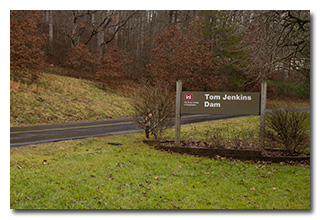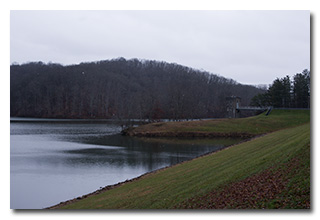
by William Eric McFadden
From the Wayne National Forest website:
-
The Wayne National Forest is a patchwork of public land that covers over a quarter million acres of Appalachian foothills of southeastern Ohio. The Forest is divided into three units managed out of two Ranger District offices located in Nelsonville and Ironton, with a field office in Marietta.
The Forest features over 300 miles of trails for hiking, all-terrain vehicle riding, mountain biking, or horseback riding in season. The trails are open to ATVs, mountain bikes, and horseback riders from mid-April to mid-December each year. Come visit the Wayne and hike or ride our trails!
From the North Country National Scenic Trail website:
-
Come to the North Country. Trek the hills and valleys. Stand on the shores of lakes & streams from glaciers 10,000 years before. Clear-flowing water, red/gold of autumn, a fairyland of snow, open prairies, and distant horizons paint the land. Historic sites along the way tell how America settled and grew as a nation. From North Dakota to New York (and soon Vermont), adventure is never far away.
Pictures
Description
 On Sunday, January 17, 2021, one member of the Southeast Ohio Radio Adventure Team
performed a successful two-fer activation of Wayne National Forest and North Country National Scenic Trail in Ohio as
part of the Parks on the Air (POTA; link).
Eric McFadden, WD8RIF, performed the activation at Tom Jenkins Dam on a cold, dreary day with spitting rain and snow and was
accompanied by little dogs Theo and Mindy.
On Sunday, January 17, 2021, one member of the Southeast Ohio Radio Adventure Team
performed a successful two-fer activation of Wayne National Forest and North Country National Scenic Trail in Ohio as
part of the Parks on the Air (POTA; link).
Eric McFadden, WD8RIF, performed the activation at Tom Jenkins Dam on a cold, dreary day with spitting rain and snow and was
accompanied by little dogs Theo and Mindy.
Eric, Theo, and Mindy arrived at Tom Jenkins dam at about 1750 UTC to find only two vehicles in the parking area. Eric parked his car at the far end of the parking lot and, after walking the dogs around for a bit, deployed his 28½' wire vertical on his Jackite 31' telescoping fiberglass mast which he supported on the drive-on mount, and set up his KX3 inside the car. Eric was on the air at 1803 UTC.
 As at previous visits to this location, Eric found he had good cell-signal and he was able to spot himself on the POTA Spots website
and to use POTA Spots to identify possible Park-to-Park (P2P) QSOs.
As at previous visits to this location, Eric found he had good cell-signal and he was able to spot himself on the POTA Spots website
and to use POTA Spots to identify possible Park-to-Park (P2P) QSOs.
Eric began his operation by looking for P2P opportunities and at 1809 UTC he made a P2P QSO on 20m with W7GFW who was activating Saltwater State Park (K-3262) in Washington.
Switching to 80m, Eric found a frequency, spotted himself, texted a couple of friends and his father, and began calling "CQ POTA". His first QSO on 80m came at 1812 UTC with his friend K8RAT in central Ohio. This was followed at 1814 UTC with a QSO with KC5F in North Carolina. Eric's third and final QSO on 80m came at 1819 UTC with his father, W8EOG, in central Ohio.
Switching to 40m, Eric's first QSO there came at 1824 UTC with NT2A in New York. QSOs came steadily, with Eric's sixteenth QSO on 40m coming at 1836 UTC with KA3QLF in Georgia.
Eric again checked POTA Spots for possible P2P QSOs and at 1839 UTC a P2P QSO was made on 40m with KN4RBN who was activating Haw River at Summit Center State Park (K-2736) in North Carolina. This was followed at 1843 UTC with a P2P QSO on 40m with W4JL who was activating South Mountains State Park (K-2753) in North Carolina. Finally, a P2P QSO was made at 1848 UTC on 40m with VE2VIA who was activating Parc de la Riviere-du-Moulin Regional Park (VE-0973) in Quebec.
In all, Eric made twenty QSOs, which included four P2P QSOs. All of Eric's QSOs were CW and were made at the 5-watt level.
Eric also submitted his log to the World Wide Flora and Fauna in Amateur Radio (WWFF; link) program for an operation at North Country National Scenic Trail, KFF-5030.
(return)